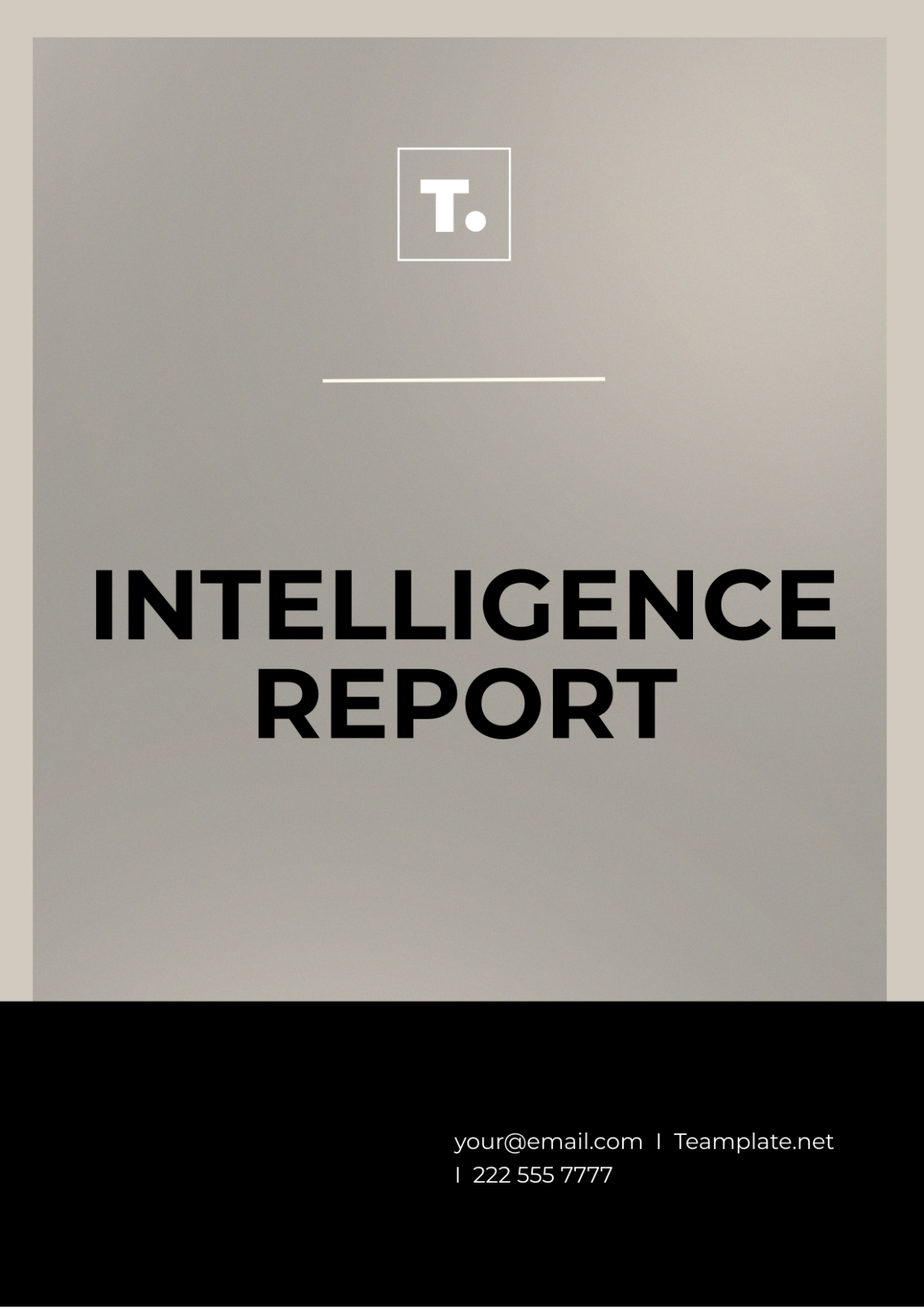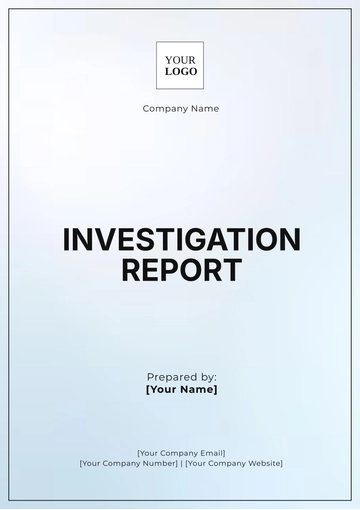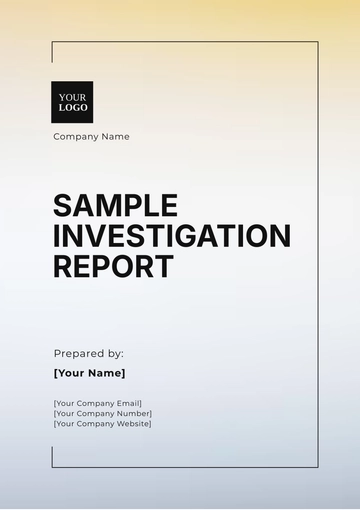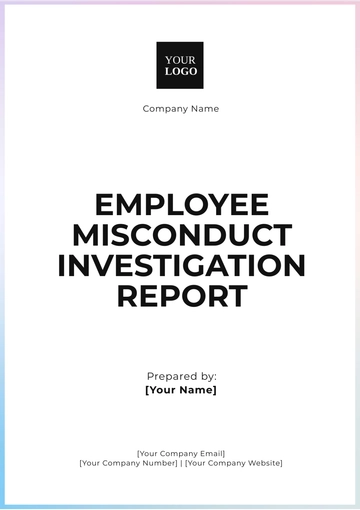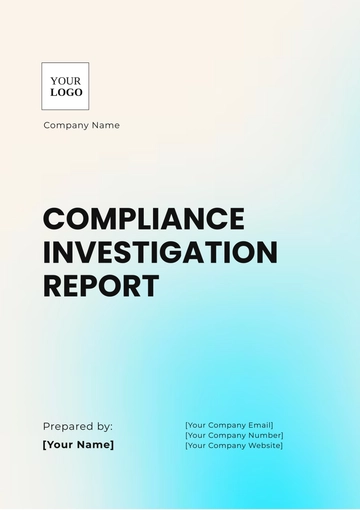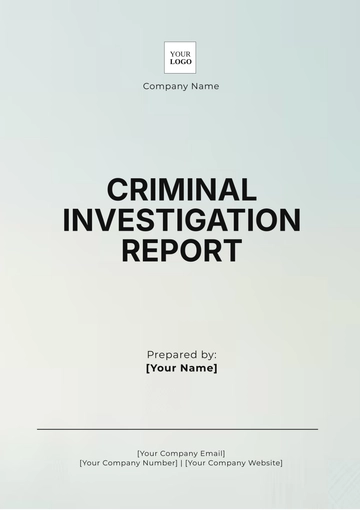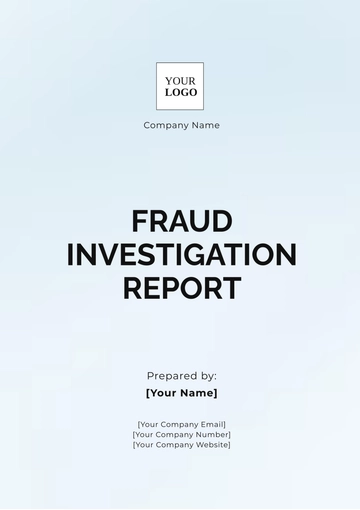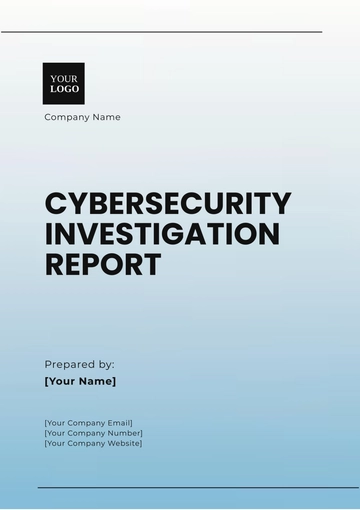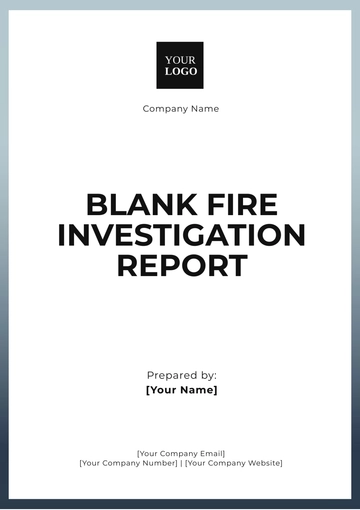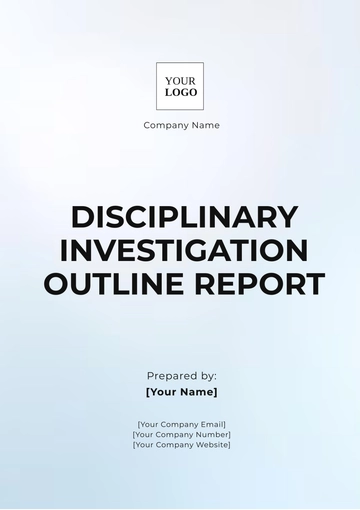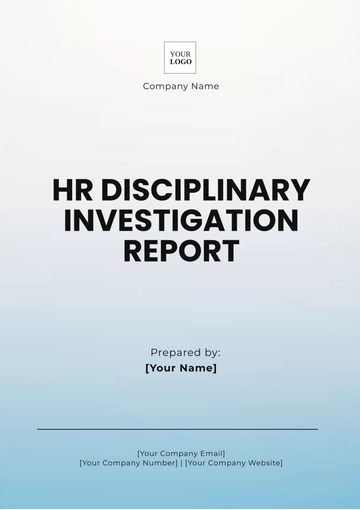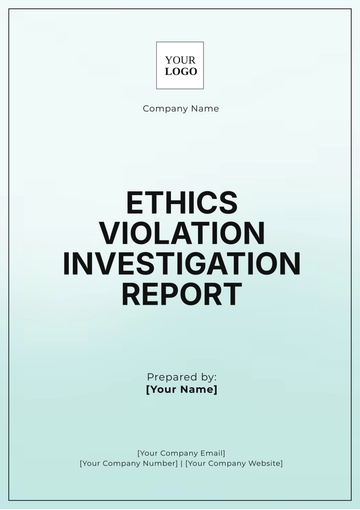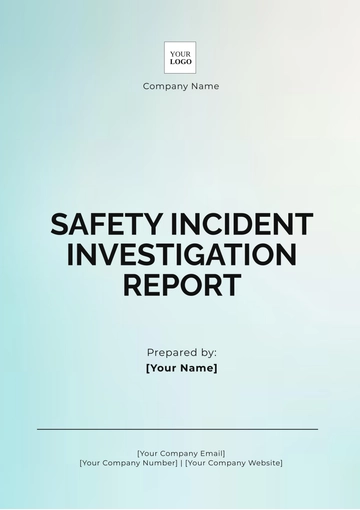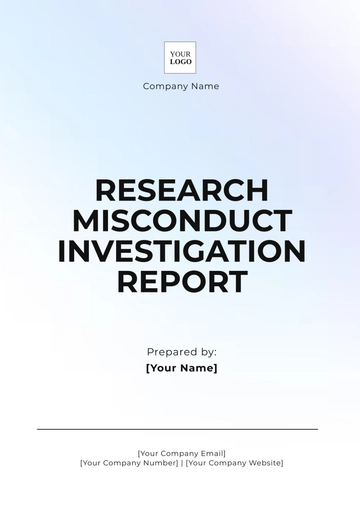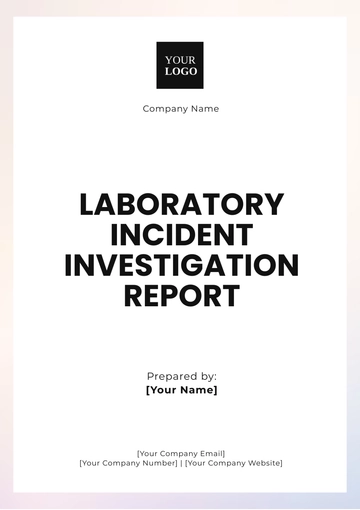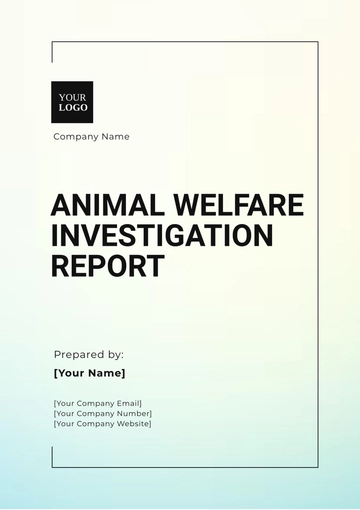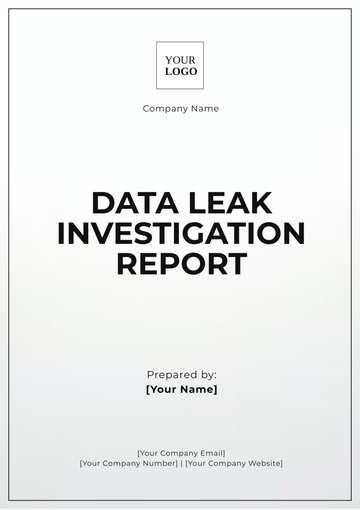Intelligence Report
Company: | [YOUR COMPANY NAME] |
Prepared by: | [YOUR NAME] | Department: | [YOUR DEPARTMENT] |
I. Introduction
The [ YOUR COMPANY NAME ] Intelligence Report is designed to provide comprehensive insights into [REPORT DETAILS]. This report aims to gather, analyze, and interpret relevant information to offer actionable intelligence for strategic decision-making. By synthesizing data from various sources, this report aims to equip stakeholders with the necessary information to understand key trends, risks, and opportunities impacting [REPORT DETAILS].
II. REPORT DETAILS
The [YOUR COMPANY NAME] Intelligence Report focuses on [REPORT DETAILS]. This encompasses [ASPECTS] and aims to provide a comprehensive understanding of [REPORT DETAILS]. Through thorough analysis and interpretation of relevant data, this report seeks to uncover insights, trends, and challenges that impact [REPORT DETAILS]. By delving into [REPORT DETAILS], stakeholders can gain valuable intelligence to inform strategic decision-making and drive positive outcomes for [REPORT DETAILS].
III. Methodology
The methodology section serves as a guide to the process undertaken to gather and analyze data for the Intelligence Report. It elucidates the approach, techniques, and instruments employed in the pursuit of acquiring pertinent information. Detailed below are the placeholders representing the components of the methodology:
SOURCES OF INFORMATION: This section delineates the various channels and references utilized to procure data for the Intelligence Report. [SOURCES HERE]
DATA COLLECTION METHODS: The methodologies employed for data collection are explicated herein. [METHODS]
ANALYTICAL TOOLS: The tools and techniques harnessed for data analysis are outlined in this segment. [ANALYTICAL TOOLS]
LIMITATIONS AND CONSTRAINTS: Acknowledgment of any constraints or limitations encountered during the data collection and analysis process is essential for transparency and integrity. [IDENTIFY THE LIMITATIONS]
By transparently documenting the methodology, stakeholders can gain insight into the rigor and validity of the insights presented in the report, fostering confidence in the findings and recommendations provided.
IV. Analysis
The analysis section presents a detailed examination of the data collected, identifying trends, patterns, and correlations relevant to [REPORT DETAILS]. It explores the implications of these findings and provides insights into the factors driving [REPORT DETAILS]. Through thorough analysis, stakeholders can gain a deeper understanding of the subject matter and make informed decisions based on the insights presented.
V. Findings
Data Examination: The analysis begins with a thorough examination of the data collected for [REPORT DETAILS]. This involves reviewing datasets, surveys, reports, and other sources of information relevant to the topic at hand.
Trend Identification: The analysis aims to identify trends observed within the data. This includes recognizing patterns over time, variations in key metrics, and shifts in consumer behavior or market dynamics that may impact [REPORT DETAILS].
Pattern Recognition: In addition to trends, the analysis seeks to identify patterns within the data. This involves looking for recurring themes, correlations between variables, and anomalies that may require further investigation.
VI. Recommendations
The recommendations section provides actionable strategies derived from the comprehensive analysis conducted in this report. These recommendations are specifically tailored to address identified challenges, leverage opportunities, and mitigate risks associated with [REPORT DETAILS].
Strategic Partnerships
Collaborate with Industry Leaders: Forge strategic partnerships with key industry players to enhance market visibility and access new opportunities.
Joint Ventures and Alliances: Explore opportunities for joint ventures or strategic alliances to leverage complementary strengths and resources.
Market Expansion
Diversification of Offerings: Expand product/service offerings to cater to evolving market demands and increase revenue streams.
International Expansion: Explore untapped markets and consider expanding operations internationally to capitalize on global growth prospects.
Technology Adoption
Invest in Innovation: Allocate resources to research and development efforts to drive innovation and stay ahead of competitors.
Digital Transformation: Embrace digital technologies to streamline operations, enhance customer experiences, and improve overall efficiency.
Risk Mitigation
Implement Risk Management Framework: Establish robust risk management protocols to identify, assess, and mitigate potential risks effectively.
Insurance and Contingency Plans: Obtain adequate insurance coverage and develop contingency plans to mitigate financial and operational risks.
By implementing these recommendations, stakeholders can proactively address challenges, capitalize on opportunities, and drive positive outcomes in [REPORT DETAILS]. Each recommendation is carefully crafted to align with the specific needs and objectives outlined in the report, enabling stakeholders to navigate complexities and achieve sustainable growth and success.
VII. Conclusion
In conclusion, the [ YOUR COMPANY NAME ] Intelligence Report provides valuable insights into [REPORT DETAILS]. By leveraging data-driven analysis and strategic recommendations, stakeholders can make informed decisions and drive positive outcomes in [REPORT DETAILS]. This report serves as a valuable resource for guiding future actions and strategies related to [REPORT DETAILS].
Report Templates @ Template.net
